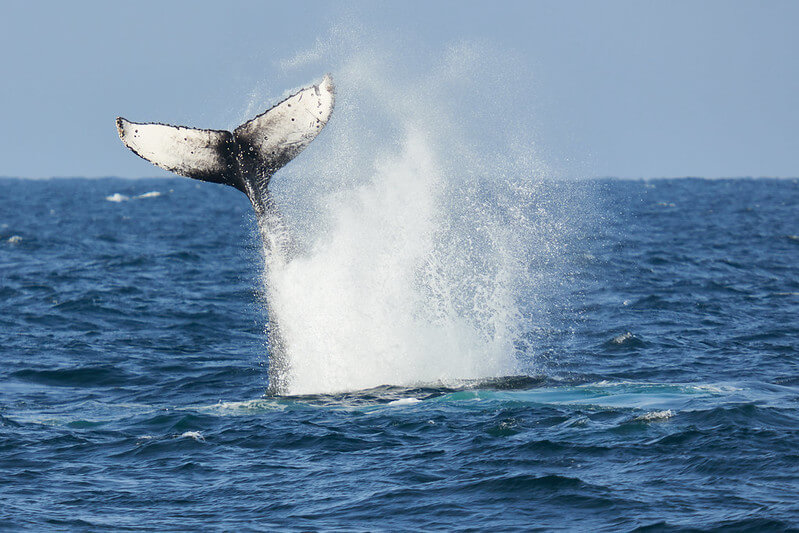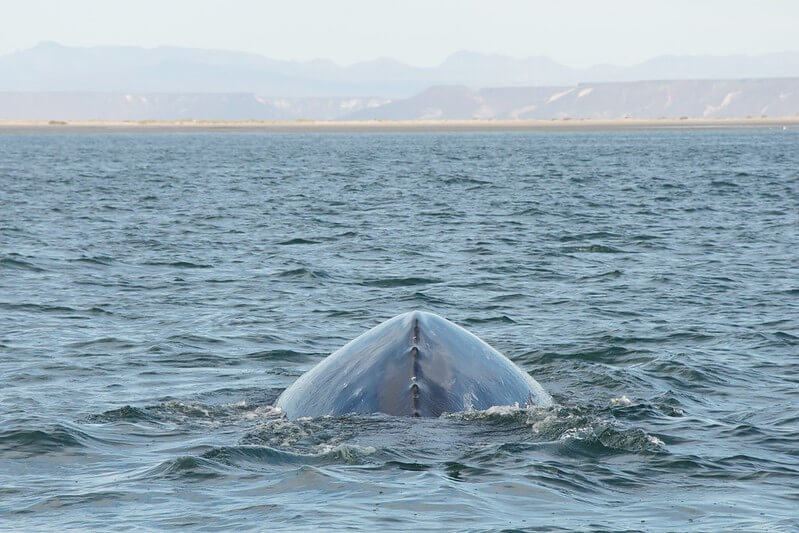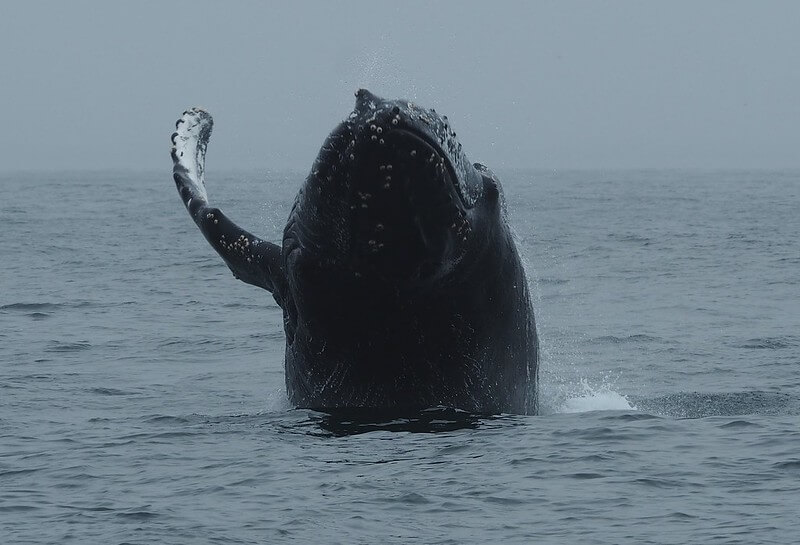When thinking about whales it’s easy to immediately gravitate toward an image of peacefulness that seems almost magical. How can you not?
Watching these creatures effortlessly swim through the blue ocean in a kind of underwater ballet is a truly sublime sight.
Nevertheless, even some of the smallest members of the whale family have enough strength to really hurt a person so if you’re a regular beachgoer or water sports aficionado like myself it’s important to know how to survive a whale attack.
Today I will tell you everything I know regarding whale attacks; if they really do happen, if they’re rare, what species to look out for, steps to survive one, and just tips on how to avoid one in the first place.
Let’s dive right in!
Do Whales Attack people?
First of all, I want to make sure you and I are on the same page when it comes to what exactly is a whale.
The whale order “cetacea” is comprised of several different taxonomical families including “Delphinidae” (commonly known as dolphins) and “Phocoenidae” (porpoises) among others.
This means that all species of dolphins and porpoises are really just smaller, toothed whales.
So in this article, I will be referring to ALL whale species, from the colossal blue whale to the tiny vaquita porpoise and everything in between.
Now that the taxonomical stuff has been clarified the answer is YES! Whales do attack people.
However, there are a lot of gray areas as incidents are scarce and most species have zero attacks on record.
Are Whale Attacks Rare?
Whale attacks are EXTREMELY rare. In fact, you’re far more likely to be bitten by another swimmer than by a whale.
Most cetaceans will usually avoid human contact and the few incidents involving these marine mammals are usually the result of harassment by the person.
Which Species Of Whale Might Attack A Human
Dolphins are perhaps the member of the whale family responsible for the most attacks on humans and it’s largely due to the fact that most people have this “Flipper” image in their mind and attempt to chase and grab these mammals when seeing them in the wild.
However, attacks are so rare that there are no exact numbers available.
There has only been one dolphin-related fatality ever recorded and it occurred in Brazil in 1994 when an inebriated man was forcibly restraining a wild dolphin.
And when it comes to killer whales there has never been a single fatality and only one confirmed attack which took place in 1972 when an orca attacked a surfer who ended up needing over 100 stitches in a seemingly unprovoked attack.
The only other whale that has ever been involved in incidents with humans has been the humpback whale and while researching I could only find 2 recorded incidents all of which resulted in the people involved making a complete recovery.

It’s worth noting that both incidents involved humpback whales during calving season and were the result of swimmers getting a bit too close to mothers with calves during whale-watching tours.
Steps To Survive A Whale Attack
Ok, so I will split this up into:
1. steps to survive a small whale attack; dolphins, orcas, belugas, and such.
2. steps to survive a large whale attack; think about humpback whale, blue whale, sperm whale, etc.
Steps to survive a small whale attack
- Stay calm! I know staying calm sounds repetitive but if you are facing an animal attack it could really mean the difference between life and death. Assess the situation as quickly as possible and look at the closest exit route.
- If a cetacean is lunging at you and trying to ram you get out of the water as soon as possible. If you’re far from land or a boat but people are around call out to them to ensure you can get to safety quicker.
- If a cetacean grabs you by your foot or leg TAKE A BIG BREATH! You will likely be pulled underwater. Don’t start thrashing and kicking trying to get released as this will just make it more interested in holding you tighter. Stay very still as you’ll likely get released soon.
- Get out of the water as soon as possible.
Steps to survive a large whale attack
- Avoid swimming with sperm whales. If you are scuba diving, snorkeling, or swimming and come across sperm whales get out of the water as this is the only whale that can really swallow you and there is really nothing you can do after that.
And while humans are not on the sperm whale’s menu due to their large size, and absolutely huge teeth, if you get in the way of these guys gorging on a school of fish chances are you’ll go in too.
- If you get swallowed by a baleen whale you must remain calm! I know it’s easier said than done but these guys have no teeth and an esophagus the size of your fist so there is no possible way you can be eaten.
If a baleen whale accidentally swallows you while feeding on krill it will only be a few seconds before you’re spat out so just chill for a few as history has shown that you will live to tell the tale.
- Get out of the water. I know after an experience like that getting out of the water is the first thing you’ll want to do but worth emphasizing on it.
This also applies when you’re swimming with whales and notice signs of discomfort such as lunging at you or tail slapping.
The best way to survive a whale attack is to prevent it from happening.
How To Avoid A Whale Attack
If you’re ever in the presence of whales in the wild consider yourself lucky and enjoy the breathtaking experience!

Remember that these majestic creatures rarely attack humans and if you follow basic whale etiquette chances are you’ll be fine.
So in order to remain safe make sure to:
- Never chase or harass a whale. Always observe from a distance and let them be the ones who approach you and not the other way around. If they decide to swim away don’t chase after them.
- Learn to recognize aggressive displays. Before getting in the water research what animals inhabit the area and read up on their behavior. This way you will be able to identify their body language and understand signs that tell you it’s time to get out.
- Don’t touch whales! Never try to touch wild animals; it could be detrimental to your health and theirs and no one wants to be touched by strangers anyway.
- Don’t feed them. Feeding wild animals is illegal in most places and for good reasons! Not only could animals grow dependent on being fed by humans but it can increase aggression when trying to get treats out of you.
Final Thoughts
Humans have been mesmerized by whales since the earliest sights sailors caught of them and the more that these species are studied the more we realize how amazing they truly are.
However, it is important to keep in mind that they are wild animals after all, and to avoid incidents we must treat them as such.
I hope today you have enjoyed learning about whale attacks and that you’re better prepared if you ever encounter one of these awesome marine mammals in the wild.
I am a lover of everything nature and animal related with over 15 years of experience in the field of wildlife rescue and education. Currently living in Colombia working with wild and domestic animals and spending all my free time writing about them 🙂

